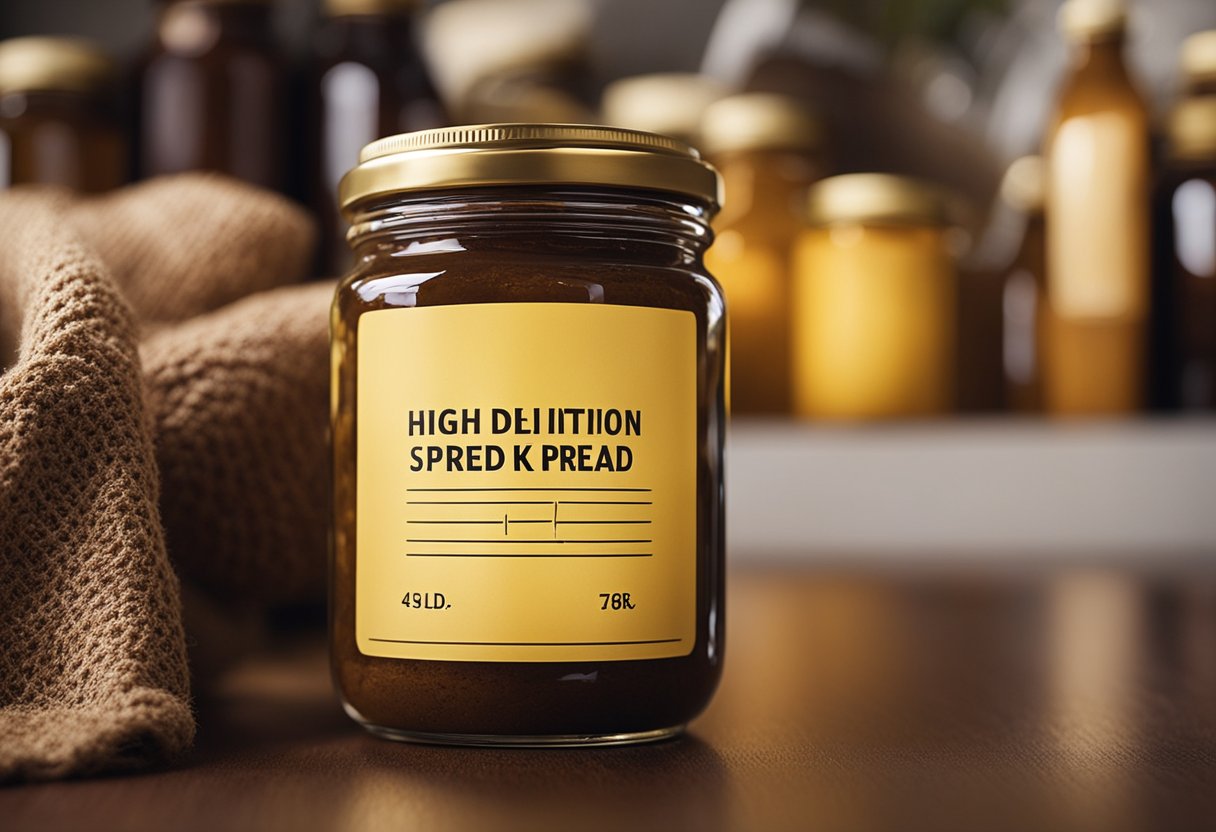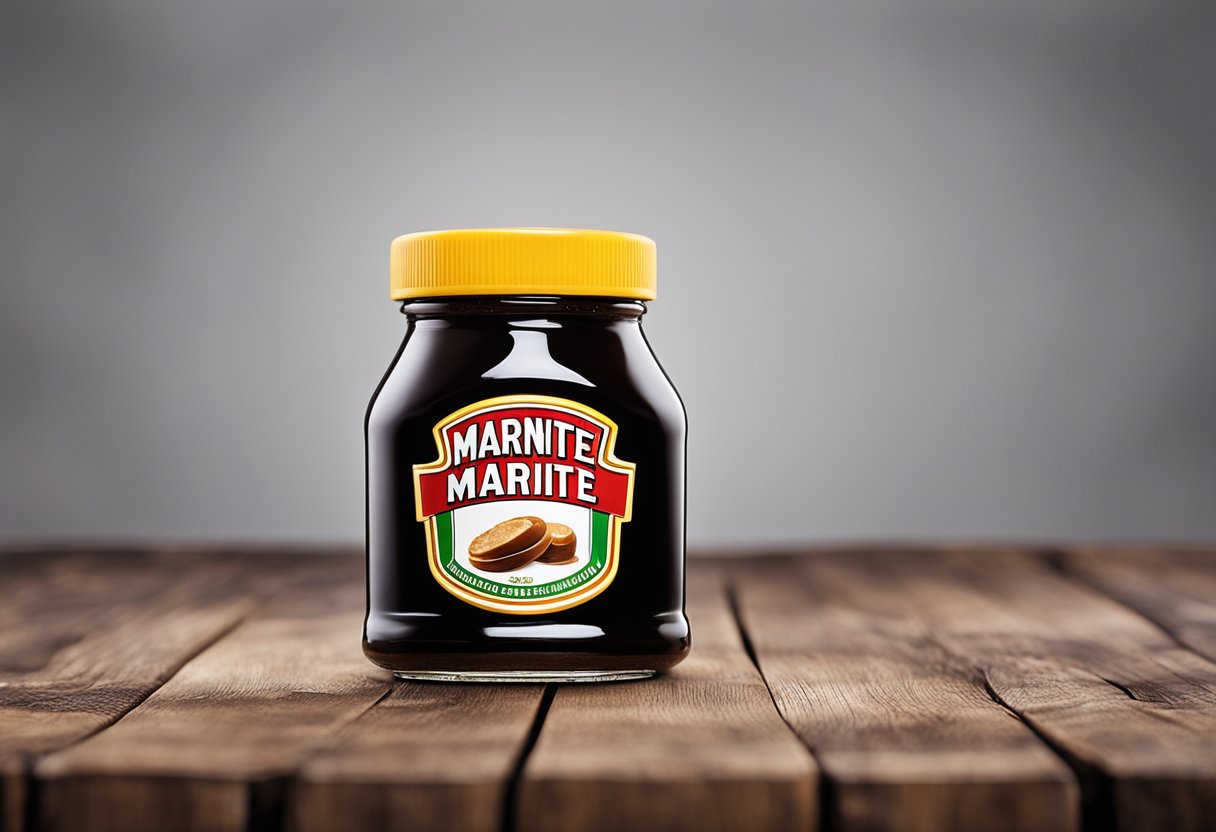I have tried Marmite before, and it’s safe to say that it’s an acquired taste. Marmite is a food paste made out of yeast, and it has a pungent smell.
It’s a British product that has been supplied to the royal family for at least five years. Marmite is a spread that is used on buttered toast, crackers, or sandwiches.

The taste of Marmite is a bit hard to describe. It’s a salty spread made from leftover yeast from beer brewing, and it has a rich umami flavor.
Some people describe it as savory and meaty, while others say it’s bitter and unpleasant. Marmite has a strong taste, and its fans emphasize the fact that either you love it or you hate it—there’s no in-between.
If you’re interested in trying Marmite, you can find it in most grocery stores in the United Kingdom and some specialty stores in other countries.
You can also order it online. Keep in mind that a little goes a long way, so start with a small amount. Marmite can be used in soups, sauces, and meat dishes, but it’s most commonly used as a spread on toast.
Key Takeaways
- Marmite is a British food paste made out of yeast that has a pungent smell and a strong taste.
- The taste of Marmite is described as savory, meaty, bitter, and unpleasant.
- Marmite can be found in most grocery stores in the United Kingdom and some specialty stores in other countries, and it’s commonly used as a spread on toast.
What is Marmite?
Marmite is a savory spread that is popular in the United Kingdom and some other countries. It is a thick paste that comes in a jar and has a sticky consistency.
Marmite is made from yeast extract, which gives it a concentrated, salty, and savory flavor. The spread is fortified with vitamins and minerals, making it a nutritious addition to your diet.
Physical Description
Marmite has a dark brown color and a thick, sticky consistency. It comes in a glass jar with a distinctive yellow lid. The spread is usually used sparingly, as it has a strong flavor.
Ingredients
The main ingredient in Marmite is yeast extract, which is made from brewer’s yeast. Other ingredients include salt, vegetable extract, spices, celery, and molasses.
Marmite is vegan and gluten-free, making it a suitable spread for people with dietary restrictions.
Nutritional Value
Marmite is a good source of vitamins and minerals, including riboflavin, folic acid, thiamin, sodium, vitamin B12, niacin, and protein. It is low in calories, carbohydrates, fat, and fiber. One serving of Marmite (5g) contains just 10 calories.
Marmite vs Other Spreads
Marmite is often compared to Vegemite, another yeast extract spread that is popular in Australia. While both spreads have a similar flavor, Marmite is slightly sweeter and less salty than Vegemite.
Marmite is also a good alternative to peanut butter, butter, and margarine for people who are vegetarian or vegan.
Dietary Considerations
Marmite is a suitable spread for people who are vegetarian, vegan, or gluten-free. It is also a good source of vitamins and minerals for people who are looking to boost their nutritional intake.
However, Marmite is high in sodium, so people who are watching their salt intake should use it sparingly.
The Taste of Marmite
Marmite is a unique spread that has a love it or hate it reputation. It has a strong, salty, and bitter taste that is often described as an acquired taste.
In this section, I will explore the taste profile of Marmite, its pairings and combinations, and its usage in cooking.
Taste Profile
Marmite has a distinctive taste that is hard to describe. It is a salty, savory spread that has a deep umami flavor from the yeast extract. Some people compare the taste of Marmite to soy sauce, while others say it has a bitter and vegetal flavor.
When eaten on its own, Marmite can be overpowering due to its intense saltiness. However, when used sparingly, it can add a unique flavor to dishes that enhances their taste.
Pairings and Combinations
Marmite is a popular spread for toast and buttered toast, as well as crackers and cheese. It can also be used as a dip or condiment for vegetables, rice, and other dishes.
For those who love the taste of Marmite, it can be combined with peanut butter or sugar to create a sweet and salty flavor. It can also be added to soups, stews, sauces, and casseroles to enhance their flavor.
Usage in Cooking
Marmite is a versatile ingredient that can be used in a variety of dishes. It can be added to sauces and gravies to give them a rich and savory flavor. It can also be used as a marinade for meat or as a seasoning for vegetables.
In baking, Marmite can be used to add a savory flavor to bread and other baked goods. It can also be used in dessert recipes to create a unique flavor profile.
Overall, Marmite is a condiment that has a unique flavor that many people either love or hate. Its strong, salty, and umami taste makes it a versatile ingredient that can be used in a variety of dishes to enhance their flavor.
Buying Marmite

As a fan of Marmite, I know how important it is to find the right place to buy it. In this section, I will share my knowledge about where to buy Marmite and the price range you can expect to pay.
Where to Buy
Marmite can be found in a variety of locations, including grocery stores, online retailers, and specialty food stores. If you prefer to shop in-person, you can find Marmite at most major grocery stores such as Tesco.
You can also find it at specialty food stores that carry imported goods.
If you prefer to shop online, you can find Marmite on Amazon and other online retailers. Shopping online is a great option if you are unable to find Marmite in your local grocery stores or if you prefer the convenience of having it delivered to your doorstep.
Price Range
The price of Marmite can vary depending on where you buy it and the size of the jar you purchase. On average, you can expect to pay around £3-£4 for a 250g jar of Marmite at most grocery stores.
However, prices may be higher or lower depending on your location.
If you prefer to buy Marmite online, you may be able to find it at a slightly lower price. For example, a 250g jar of Marmite on Amazon may cost around £2-£3.
However, keep in mind that shipping costs may apply, so be sure to check the total cost before making your purchase.
Overall, when it comes to buying Marmite, there are plenty of options available. Whether you prefer to shop in-person or online, you should be able to find Marmite at a reasonable price.
The Cultural Impact of Marmite
Marmite is a British spread that has been around for over a century. It has a very distinctive taste that people either love or hate.
In this section, I will explore the cultural impact of Marmite, including its popularity in the United Kingdom and New Zealand, its use by British troops during World War I, and its presence in popular culture.
Love it or Hate it
Marmite is a spread that has polarized opinions for generations. Some people love it, while others can’t stand the taste.
This divide has even led to the creation of a marketing campaign that uses the slogan “Love it or Hate it” to promote the product. Despite this division, Marmite has remained a staple in British households for generations.
Marmite in Popular Culture
Marmite has also had a significant impact on popular culture. It has been referenced in numerous TV shows, movies, and songs.
For example, in the Monty Python sketch “Spam,” a group of Vikings sing a song that includes the lyrics “We’re Vikings, we’re Vikings, we’re the Marmite-loving kind.” Marmite has also been referenced in songs by popular artists such as the Beatles and Pink Floyd.
Marmite’s cultural impact extends beyond entertainment. It has also been used as a symbol of Britishness and has been associated with the British troops during World War I.
In fact, Marmite was included in the rations of British soldiers during the war.
Marmite’s cultural significance is also reflected in its status as a Royal Warrant holder. This means that Marmite is an official supplier to the British Royal Family.
This distinction is only given to companies that have provided goods or services to the Royal Family for at least five years.
In New Zealand, Marmite has a similar cultural significance. It is considered a national treasure and has been produced in New Zealand since the 1910s.
In fact, during a Marmite shortage in 2012, New Zealanders were willing to pay exorbitant prices for the spread on online auction sites.
Overall, Marmite’s cultural impact is undeniable. It has become a symbol of Britishness and has been referenced in popular culture for generations.
Despite its polarizing taste, Marmite has remained a staple in British households and has even been included in the rations of British soldiers.
Frequently Asked Questions
What are the benefits of eating Marmite?
Marmite is a rich source of vitamins and minerals, including vitamin B12, which is essential for maintaining a healthy nervous system. It also contains high levels of protein and is low in fat and sugar, making it a healthy addition to any diet.
What is the flavor of Marmite?
Marmite has a distinct and strong flavor that is difficult to describe. It is salty and savory, with a slightly sweet undertone. Some people describe it as tasting like soy sauce, while others say it has a bitter or yeasty taste.
How do you eat Marmite?
Marmite is most commonly eaten as a spread on toast, crackers, or sandwiches. Some people also use it as a seasoning in soups, stews, and other dishes.
What is Marmite used for?
Marmite is a versatile food that can be used in a variety of ways. In addition to being a spread, it can be used as a seasoning in cooking, as a marinade for meat, and as a flavoring in soups and stews.
Why does Marmite taste so bad to some people?
Marmite’s strong flavor is not for everyone. Some people find it too salty or bitter, while others dislike its yeasty taste. Additionally, Marmite contains glutamic acid, which can trigger a reaction in people who are sensitive to it.
Why do Brits love Marmite?
Marmite is a beloved British food that has been around for more than a century. It is a staple in many British households and is often associated with childhood memories.
Brits love Marmite for its unique flavor, which they find comforting and nostalgic.







